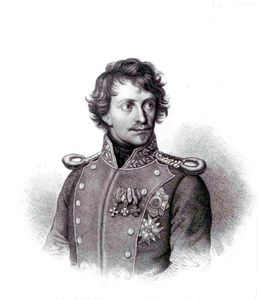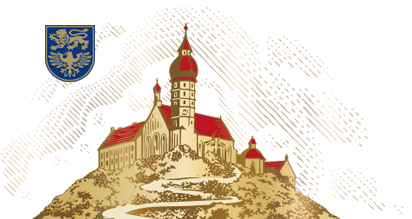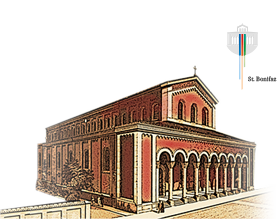New approaches to pastoral care and economics
After the dissolution of the old abbey, it only took until 1846/50 for monastic life to return to the Holy Mountain.

Except for the Elisabeth Church and the Church of the Brotherhood of the Three Hosts, no buildings are demolished after the abbey is dissolved in 1803.
The monastery buildings are first sold in 1804 and change hands frequently. Servants at the monastery are hardest hit by its dissolution.
The elderly, the ill and single people in particular suffer, because government pensions are far below what the monastery has provided in the past.
Finally King Ludwig I buys the monastery buildings in 1846 for 65,000 gulden as an estate for his Saint Boniface Benedictine Abbey founded in 1850 in Munich.
Pastoral care and estate
Pastoral care for the parish of Erling and pilgrimage on the Holy Mountain were on the agenda from the outset. After all, pilgrimage was a key part of pastoral care for the Andechs Benedictines until the monastery was dissolved in 1803. In 1847, the Benedictines of Metten took over pastoral care in the parish of Erling and looked after pilgrimage during a transition phase. The parish and pilgrimage were then officially transferred to Saint Boniface Abbey in Munich in 1851.

Father Magnus Sattler was one of the most prominent figures to define the Andechs Monastery as a place of pilgrimage and estate after the year 1850. Almost continuously from 1858 until his death in May of 1901, he was first superior and from 1873 onward prior in Andechs. This period of over 40 years was defined by extensive renovations, overhauls and modernisation.
The Nikolausanstalt, a facility for children from difficult family situations, was established in 1856. Abbot Gregor Danner (1904-1919) acquired the Schwaige Rothenfeld along with its landed property in 1905. Here the Gregoriusanstalt was established for around 100 delinquent youths – a complex with residential units that, due to its almost familial atmosphere, care and education in small groups was revolutionary in its time. Day-to-day operations however cost large sums of money that could only be covered in part by monastery revenues and government subsidies.




